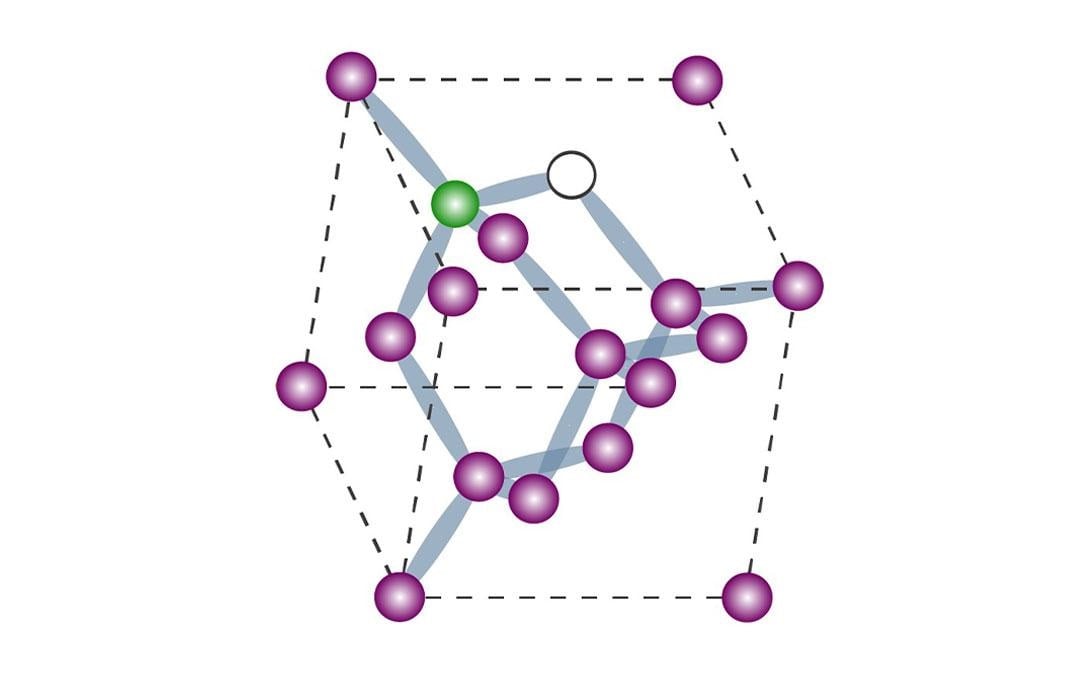A nonlinear optical approach to temperature sensing, discovered by scientists at the University of Tsukuba and the Japan Advanced Institute of Science and Technology (JAIST), could expedite development of nanosize sensors for applications that operate at the nanoscale.
Researchers at the institutions monitored the effects of temperature on the nonlinear optical response of nitrogen-vacancy (NV) defects introduced into bulk diamond. They found that when they increased the heat to which the NV defects were exposed, there was a reduction in the intensity of the nonlinear harmonic generation of light.
NV defects are naturally occurring, atom-like flaws in diamond that are made of carbon atoms arranged in a diamond cubic lattice; they appear when two adjacent carbon atoms are replaced by a nitrogen atom and a hole. NV defects have unusual quantum and nonlinear optical properties, including the ability to combine two, or even three, photons together into a single, high-energy photon. This process is called harmonic generation. When two photons are combined and generate a new photon with twice the energy of the initial photons, the process is specifically described as second-harmonic generation.

University of Tsukuba researchers used the nonlinear optical response of atom-like defects in a diamond to build a tiny thermometer. Courtesy of the University of Tsukuba.
Using ultrashort pulse laser stimulation in the infrared (IR) wavelength, the researchers investigated the relationship between temperature and second-harmonic generation in NV defects in diamond. The team observed that the intensity of the second-harmonic generation in the NV defects decreased when the temperature rose above the range of 20 to 300 °C.
The temperature-dependent change in the harmonic generation was due to phase mismatching caused by refractive index modification — that is, the difference in the speeds of the colors of light in the diamond. As the atomic lattice of the NV defect heated up, the difference in refraction between the original light and the high-energy light created by harmonic generation grew larger, decreasing the efficiency of the harmonic generation.
The scientists fitted temperature dependence to second-harmonic generation intensity using a model based on the bandgap change via interaction with the deformation potential. This led the team to discover that optical phonon scattering outperforms acoustic phonon scattering in NV diamond defects.
As nanophotonics is increasingly used to develop new optical devices, the team pointed out, the ability to measure temperatures at nanoscales will become essential. Conventional thermometers are often too large or impractical for measuring temperatures in applications that involve length scales smaller than a few hundred nanometers. New approaches are needed to develop tiny, noncontact, optical, and quantum sensors that can be used with miniaturized devices and applications for precise measurement.
The work of the Tsukuba/JAIST team could provide a means to realize highly accurate, nanosize thermometers. “This study presents an efficient and viable way for creating diamond-based nonlinear optical temperature sensing,” researcher Aizitiaili Abulikemu said.
Future applications could even include a thermometer small enough to embed inside a living cell. The nanothermometer could be detected remotely with a laser.
“Diamonds can be processed into a tiny tip for a probe as part of a nanometer-scale temperature sensor,” professor Muneaki Hase said.
The research was published in Optics Letters (www.doi.org/10.1364/OL.455437).